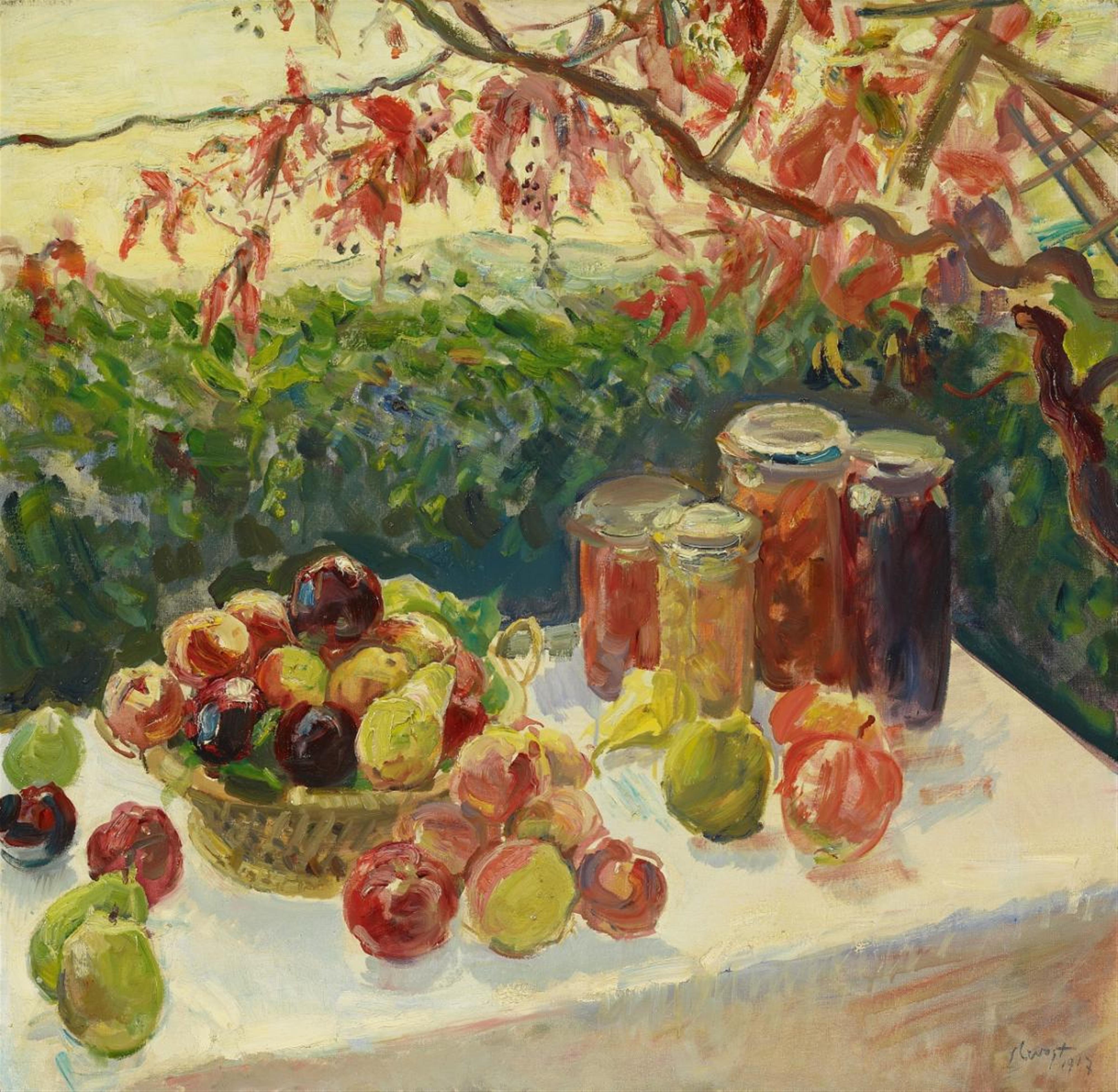Max Slevogt
Herbstliches Stilleben mit Früchten, Weinlaube Neukastel
1917
Oil on canvas 75.1 x 78.3 cm Framed. Signed and dated 'Slevogt 1917' in blue lower right. - With a fragmentary exhibition label to the upper right of the stretcher to the reverse, therein handwritten in ink "No. '3404'/'Slevogt'/ ...'im Freien' ". - In very fine original condition.
The "Neukastel" estate in the Palatinate region was bought by Slevogt after a trip to Egypt in 1914, where he is known to have created a series of paintings that turned out to be his absolute artistic climax. Neukastel became his new sanctuary, particularly during the war. The estate and its surrounding countryside became a great inspiration to him as he created many new and significant paintings there. This garden piece by Slevogt, a still life with fruits and jars of preserved fruit, is set in the artist's vine arbour at Neukastel and still amazes us with its great freshness to the present day while also serving as a characteristic example of this period. The presentation of the subject is autumnal, evocative and indeed surprisingly tangible. It is also highly persuasive in its artistic liveliness and quality. Moreover, it is one of those characteristic “open-air still lifes” of 1917, as Imiela described them, although he clearly was not aware of this particular painting. Arranged on a white tablecloth with a patchwork of bluish shadows, numerous round pieces of freshly picked fruit have been scattered around a fruit basket that is almost overflowing with produce: a rich harvest of ripely picked apples and pears, velvety soft peaches and dark purple plums. None of the fruits are identical, and the painter appears to be revelling in the rich late-summer hues. The intensely colourful yet highly nuanced subject - which includes the seemingly prosaic jars - is further enhanced by some shimmering pastose light effects. But our vision reaches further, beyond the terrace, the surrounding vine branches and the dark hedge, into the distance and the wider countryside. The entire composition of this painting, which is almost square in shape, has a masterly density about it, while also being very well balanced.
“The Garden of Neukastel is, in itself, a shielded area, surrounded by walls. This close range is in contrast with the vastness of the surrounding terrain. Outside the walls, towards the south, are the sloping vineyards. The rows of vines were once arranged vertically, reaching down to the edge of a village, Leinsweiler. Beyond the village they continue along the extended stretch of the Palatinate woods that cover the hilltops. This is where, just on the other side of the wall, Slevogt found the subject of the pear tree and where he created his grape harvest paintings. The latter were to deliver important stimuli for Slevogt's subsequent landscapes and his most significant and mature works.” (Hans-Jürgen Imiela, Max Slevogt, Eine Monographie, Karlsruhe 1968, p. 208).
Catalogue Raisonné
Not recorded by Imiela
Certificate
Confirmed by Bernhard Geil, Slevogthof; we would like to thank him for his kind information dated 10 October 2012.
We would like to thank Sigrun Paas, Mainz, for the examination of the original confirming its authenticity in Mainz in 2013.
Provenance
Formerly private collection, Dortmund; since then in family possession

